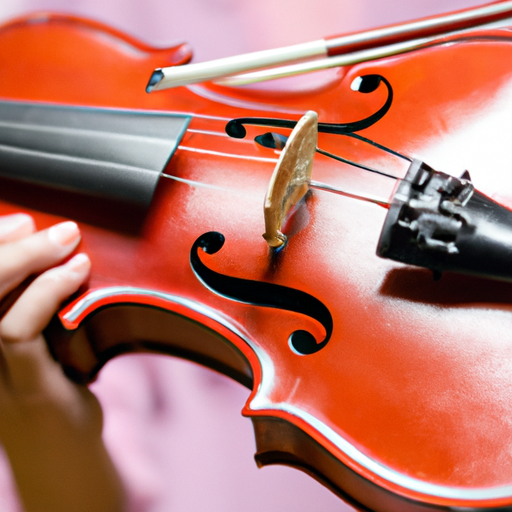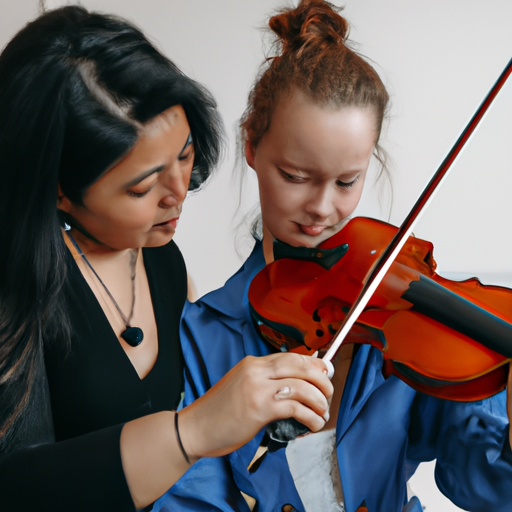
Learning to play the violin can be a rewarding and fulfilling experience. However, it is important for beginners to understand the dos and donts of learning the instrument in order to make progress and avoid common pitfalls. In this article, we will explore the key dos and donts of learning to play the violin as a beginner.

One of the most important things for beginners is to find a good violin teacher. A good teacher can provide guidance, support, and proper instruction, which is crucial for developing a strong foundation in violin playing.

When looking for a teacher, it is important to consider their qualifications and experience. Look for someone who has a strong background in violin performance and teaching. Additionally, it can be helpful to find a teacher who specializes in teaching beginners, as they will have a better understanding of the challenges and needs of a beginner student.
Another important aspect to consider is the teaching style and personality of the teacher. It is important to find someone who you feel comfortable with and who can effectively communicate with you. A good teacher will be able to provide constructive feedback and motivate you to improve.
Learning to play the violin takes time and patience. It is important not to rush through the learning process in order to avoid developing bad habits or getting discouraged.
Take your time to learn the basics and build a strong foundation. Practice each technique and concept thoroughly before moving on to the next. It is better to progress slowly and correctly rather than rushing and making mistakes.
Additionally, it is important to have realistic expectations. Learning the violin is a journey, and it takes time to develop the necessary skills and techniques. Be patient with yourself and celebrate small victories along the way.
Regular practice is essential for beginners to make progress and improve their violin playing. Aim to practice at least a few times a week, if not every day. Consistency is key when it comes to learning a new skill.
Make practicing a part of your routine and set aside dedicated time for it. Start with shorter practice sessions and gradually increase the duration as you become more comfortable. Remember, quality practice is more important than quantity, so focus on being focused and attentive during your practice sessions.
To make practicing more enjoyable, try incorporating different activities into your practice routine. For example, you can play along with recordings, experiment with different styles of music, or even try composing your own melodies. Find ways to make the learning process fun and exciting.
Proper posture and technique are crucial for playing the violin correctly and avoiding injuries. Neglecting these aspects can hinder your progress and make it difficult to produce a good sound.
When practicing, make sure to maintain a relaxed and upright posture. Keep your shoulders relaxed, your back straight, and your head aligned with your spine. It can be helpful to use a mirror to check your posture and make adjustments as needed.
In addition to posture, pay attention to your bowing and fingering technique. Practice proper bow grip and finger placement to ensure clean and accurate playing. Working with a teacher can be especially helpful in developing proper technique.
Listening to different types of music is beneficial for beginners as it helps develop musicality and broadens musical horizons. Expose yourself to various genres, from classical to jazz, from pop to folk. It can be inspiring and motivating to hear different violinists and learn from their interpretations.
Start by exploring well-known violinists and their recordings. Listen to different interpretations of the same piece and pay attention to the nuances and stylistic choices. This will help you develop your own musical voice and expressiveness.
Additionally, try attending live concerts or watching performances online. Seeing and hearing professional violinists can be a great source of inspiration and motivation. It can also provide insights into stage presence and performance techniques.
Comparing yourself to others can be detrimental to your progress and motivation. Every violinist is unique, and everyone learns at their own pace. It is important to focus on your own journey and progress rather than constantly comparing yourself to others.
Instead of feeling discouraged by someone else's ability, use it as inspiration to push yourself further. Remember that everyone starts as a beginner, and with consistent practice and dedication, you can achieve your own musical goals.
It can also be helpful to find a supportive community of fellow musicians or join a beginner's group. Surrounding yourself with like-minded individuals who share similar goals and challenges can provide encouragement and a sense of belonging.
Taking breaks is important for beginners to prevent burnout and maintain motivation. Playing the violin requires physical and mental energy, and it is important to give yourself time to rest and recharge.
During practice sessions, take short breaks every 20-30 minutes. Use this time to stretch, relax your muscles, or even do a quick mindfulness exercise. Taking breaks can help prevent fatigue and improve focus during practice.
Additionally, don't hesitate to take longer breaks or even days off when needed. If you feel overwhelmed or unmotivated, it is okay to step away from the violin for a short period. Sometimes, a break can actually be beneficial and help you come back to practicing with renewed enthusiasm.
Warm-ups are essential for preparing your body and mind for violin practice. They help prevent injuries and improve performance by loosening up the muscles and increasing blood flow.
Before each practice session, spend a few minutes doing warm-up exercises. This can include stretches for the fingers, arms, shoulders, and neck. You can also incorporate some bowing exercises to warm up the wrist and forearm muscles.
Start with slow and gentle movements and gradually increase the intensity. Pay attention to any tension or discomfort and adjust your warm-up routine accordingly. Warm-ups can not only help prevent injuries but also improve your overall playing technique.
Learning to play the violin as a beginner can be challenging but also incredibly rewarding. By following the dos and donts outlined in this article, you can set yourself up for success and make progress in your violin playing.
Remember to find a good teacher, avoid rushing through the learning process, practice regularly, and pay attention to proper posture and technique. Explore different types of music, avoid comparing yourself to others, and take breaks when needed. And don't forget the importance of warm-ups to prepare your body and mind for practice.
With dedication, patience, and a love for the instrument, you can develop your skills as a violinist and enjoy the beautiful music you can create. Keep practicing, stay motivated, and never stop learning.
Click here for more information on violin lessons for beginners.